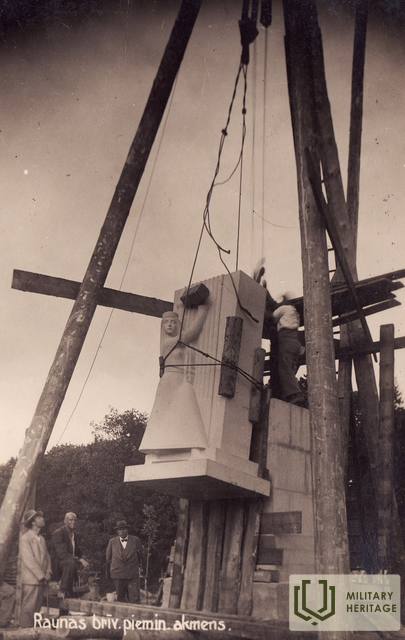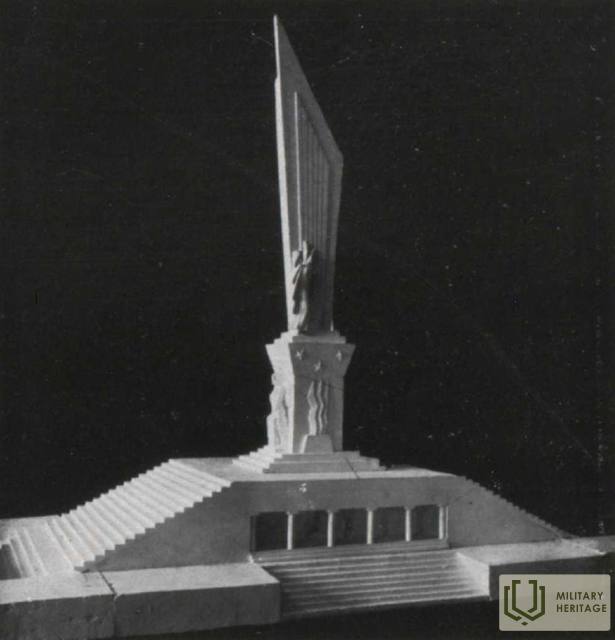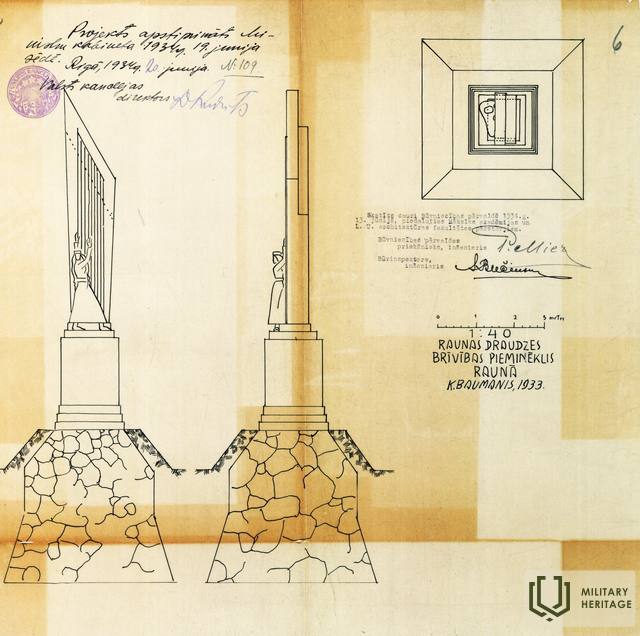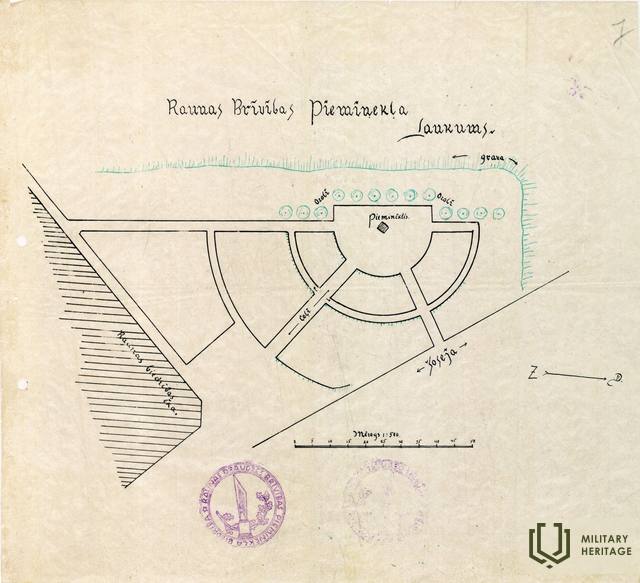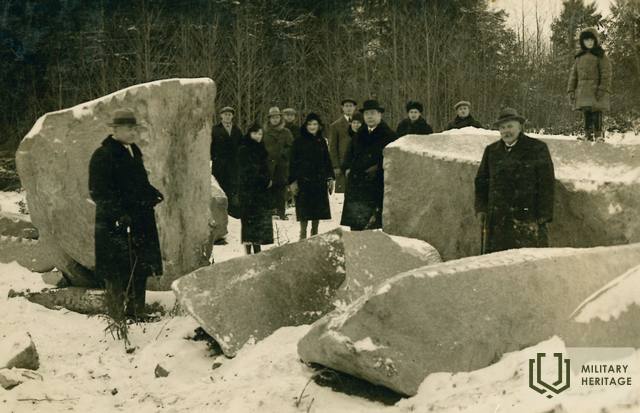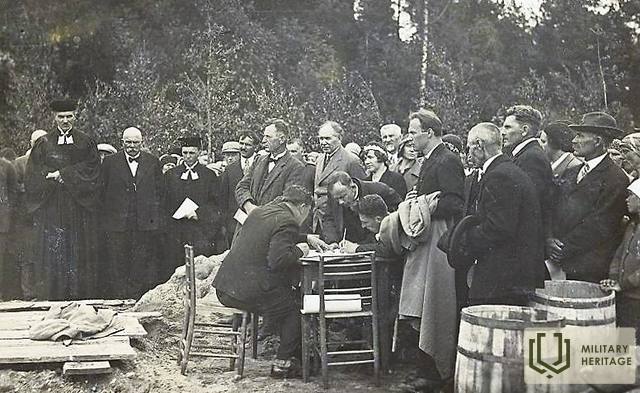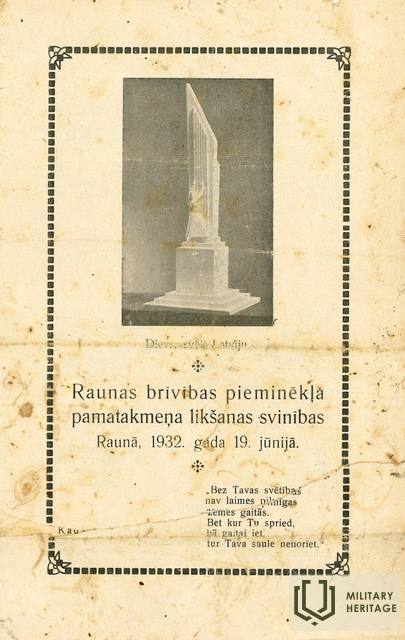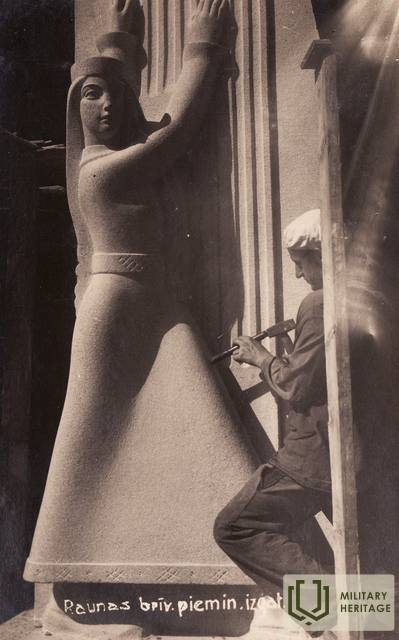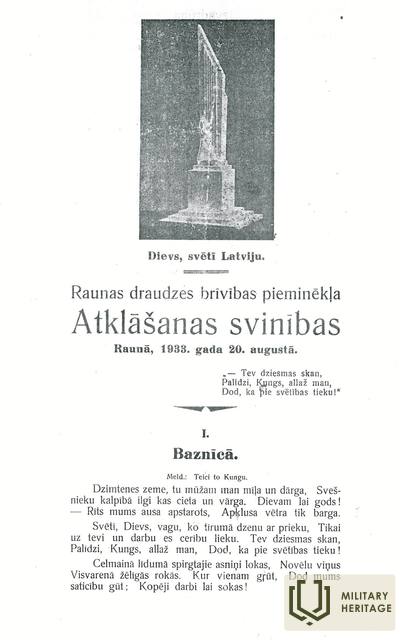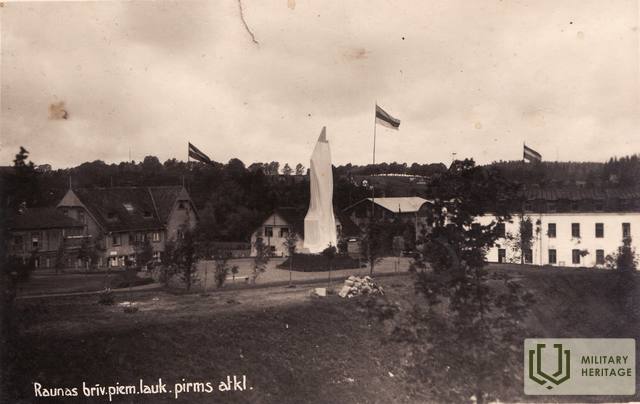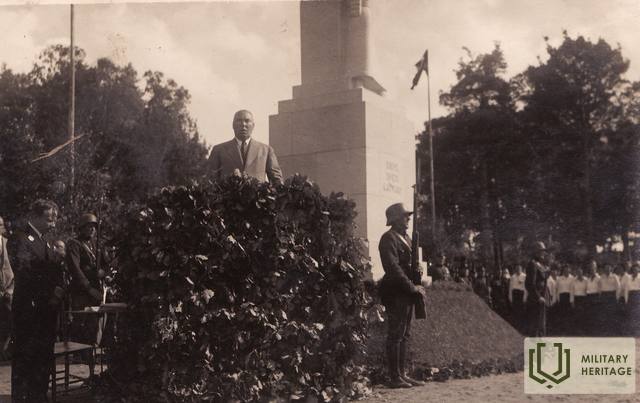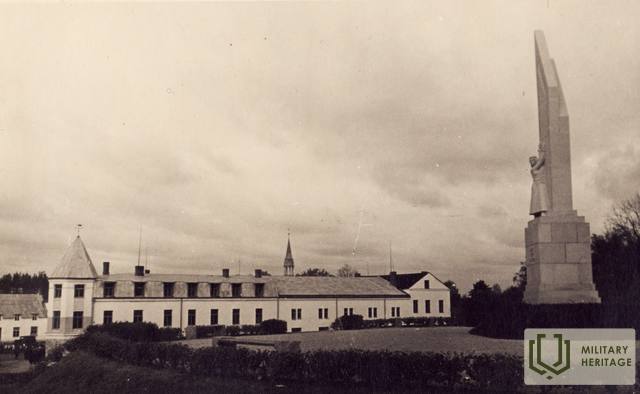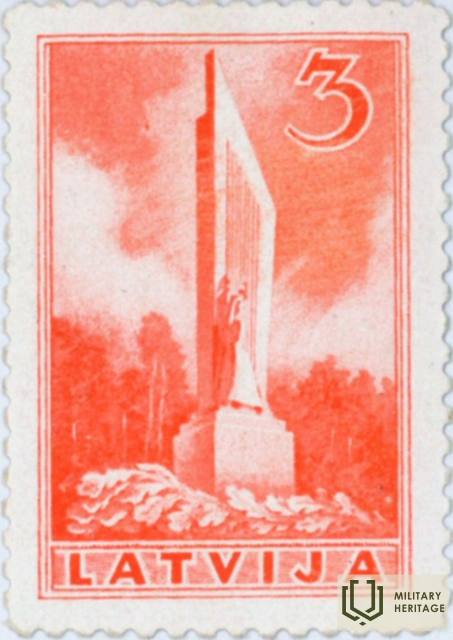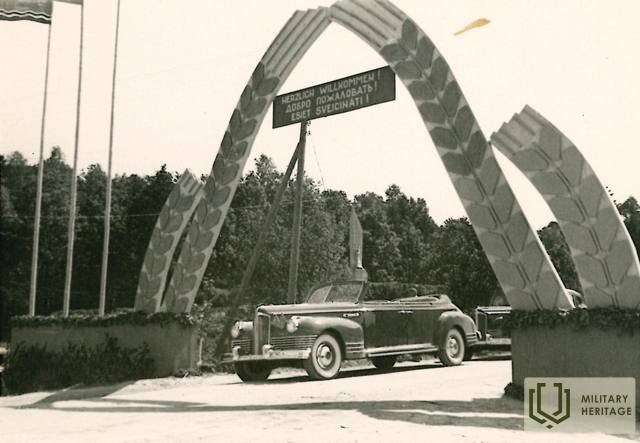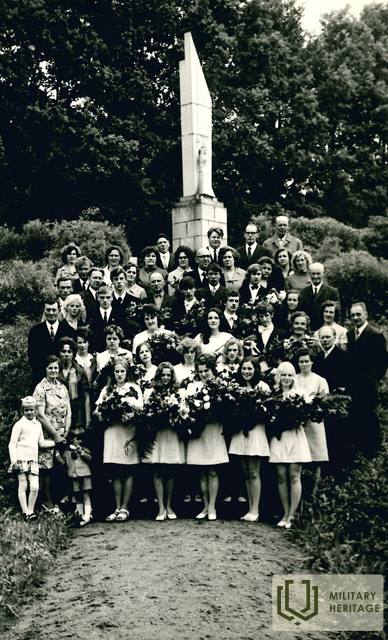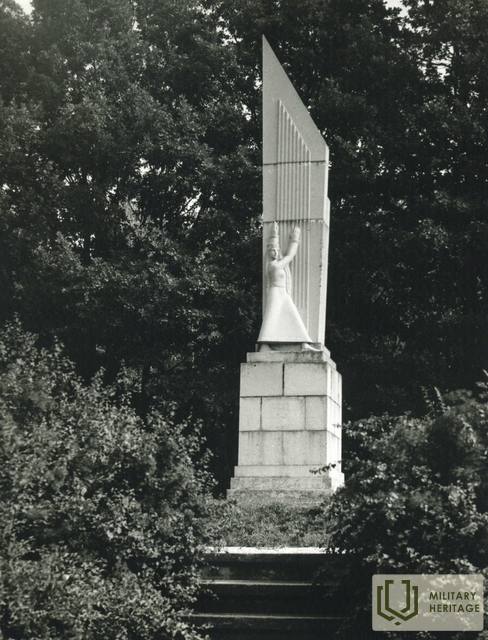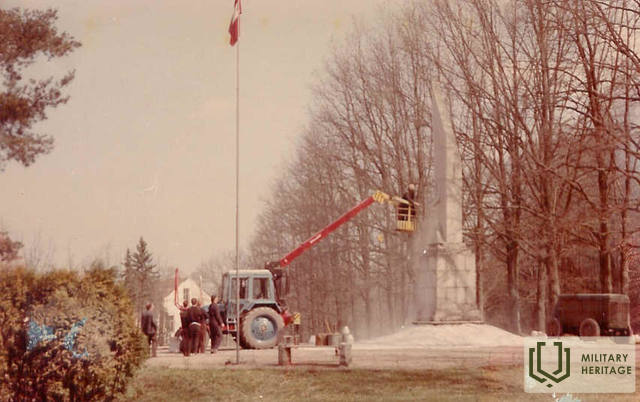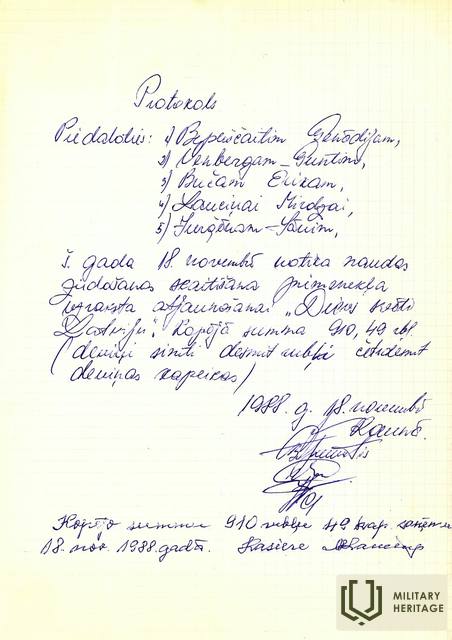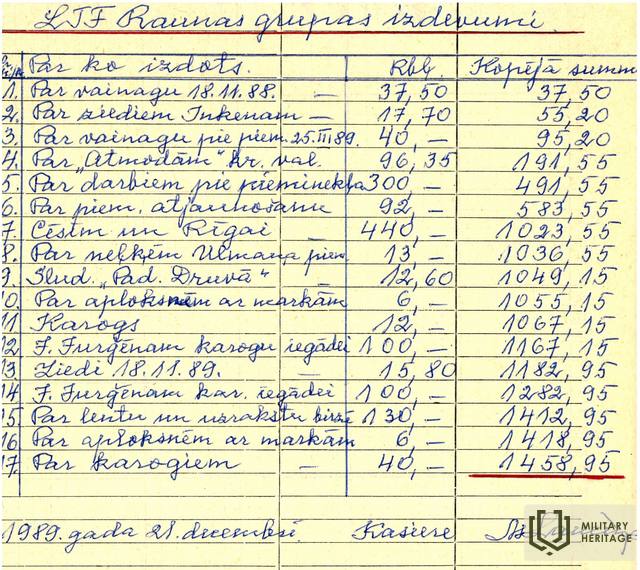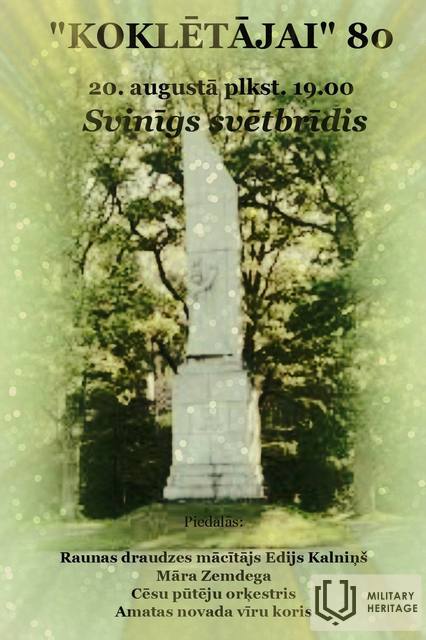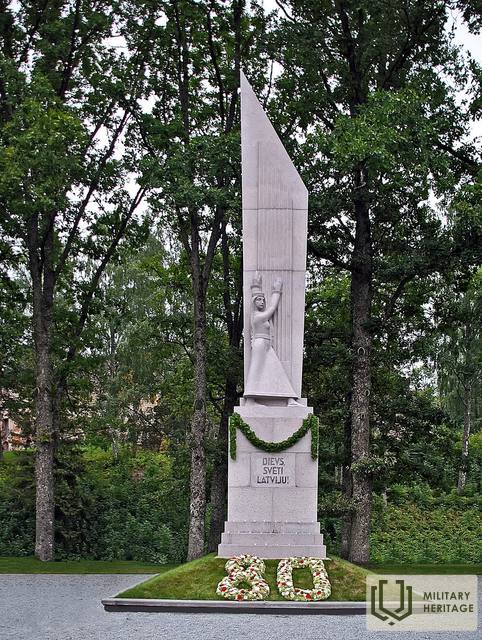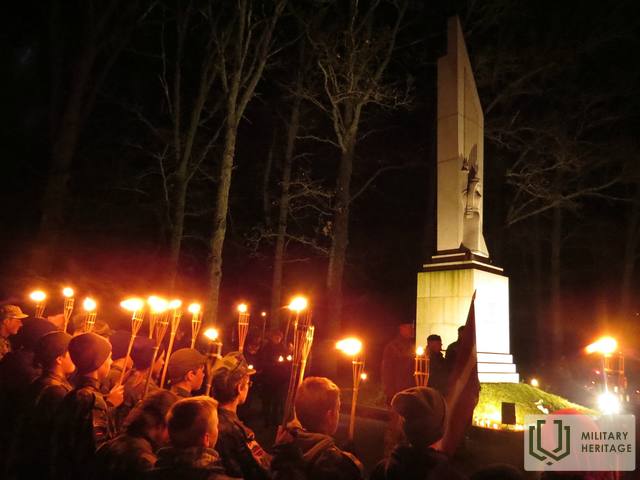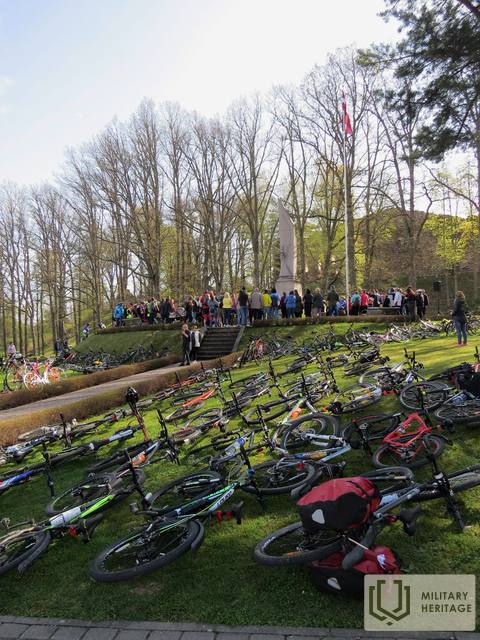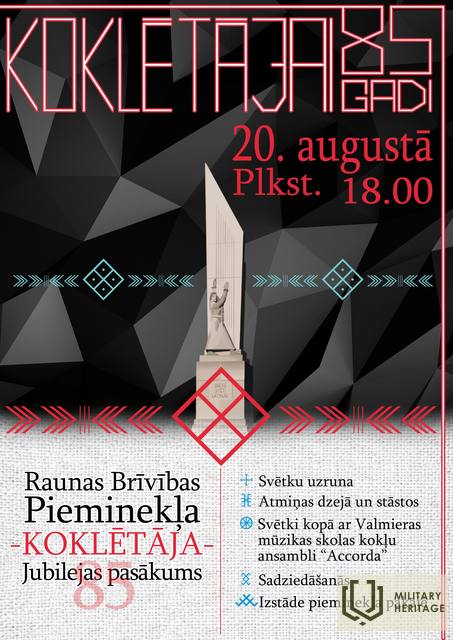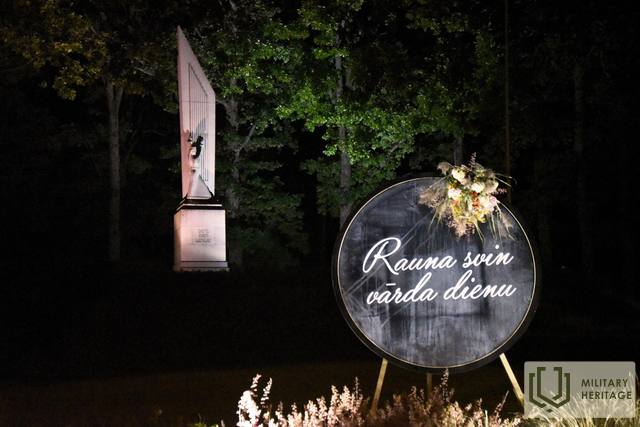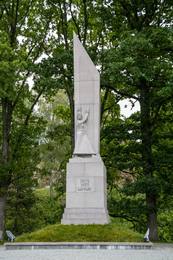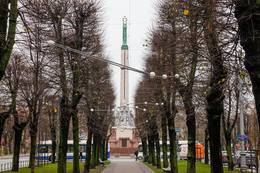Rauna Freedom Monument or Monument to the members of Rauna parish who fell in the First World War and the War of Independence
The origins of the idea of the Rauna Freedom Monument can be traced back to August 21, 1929, when the head of the city of Cēsis and the head of the Cēsis district invited the most prominent public employees of Rauna parish to a meeting, calling to honor the acquisition of freedom and build a monument in Rauna.
An amount of LVL 1,200 from the capital of the Northern Latvia Liberation Fight Memorial Committee was allocated for this purpose. A temporary presidium of three people was elected from among the gathered public employees of Rauna, whose task was to popularize the idea of building the Freedom Monument and to organize the involvement of other people.
On October 13, 1929, a meeting was convened with the participation of representatives of various public organizations of Rauna, who decided to form a new organization and named it the Committee of the Monument to the Liberation of Rauna and the Surrounding Area. Pastor Arvīds Treics was elected chairman of the committee, teacher Eduards Auks as cashier, and J. Grīslis was elected secretary.
One of the first tasks of the new committee was to find a site for the construction of the monument. The most advantageous and suitable place for the monument was the land plot belonging to Rauna Parish Council between the ruins of Rauna Castle, the building of the Agricultural Society and the Riga highway. Interestingly, after the 20th century. According to the information read in the press in the 1930s, Rauna Tanīsa Hill is mentioned as the original and possible location of the monument, which “would allow to see the monument from afar”.
The most difficult and time-consuming task of the committee was to raise funds for the construction of the monument. Donations were collected, bazaars, lotteries, parties, theater performances were organized, as well as personal invitations were sent to various organizations to donate larger sums of money. In total, around LVL 8,000 was raised for the construction of the monument and the arrangement of the square. fire insurance company (LVL 350), Culture Fund (LVL 600). The rest was raised from parties and private donors.
In the autumn of 1930, representatives of the Rauna and surroundings liberation monument committee went to Riga to visit the Secretary of the President to view the works of the Riga Freedom Monument design competition. Raunēni residents were especially attracted by the award-winning sketch “Es-dūr” by the young sculptor Kārlis Baumanis (Zemdega), who won the 3rd prize in the Riga Freedom Monuments Competition. At the heart of the monument's idea - the spear turns into a kokle, the spirit of struggle unites with the song. After discussions with the author of the sketch, the committee of the monument to the liberation of Rauna and its surroundings decided at its meeting on October 18, 1931 to build a monument in Rauna after the sculptor K. Baumanis (Zemdegas), using local granite as material. A stone suitable for the monument was found about 4 km from the center of Rauna, near the former Lorenzi half-manor. One of the most difficult tasks was to move the heavy stones to Rauna.
At the same time, the committee also worked on the creation of a monument square - demolition of the hill, creation of terraces, installation of stairs, planting of trees and bushes. In the spring of 1932, the committee organized the planting of a memorial oak alley in the monument square. Each planted oak is in memory of one of the members of Rauna parish who died in the War of Independence. Under each planted oak is buried a bottle with the name of the deceased member of Rauna parish and short biographical data. On July 19, 1932, a solemn event was laid to lay the foundation stone of the monument. The foundations of the monument are buried to a depth of about 10 feet, along with a solemnly signed deed, coins, newspapers and other items.
In order to better implement the issue of funding for the construction of the monument, the Rauna and Surroundings Liberation Monument Committee decided to become an official organization and register as the Rauna Parish Freedom Monument Society. On May 21, 1933, the board of the new association was elected. Pastor Arvīds Treicis became the chairman of the association, teacher Jēkabs Pinnis became the secretary, teacher Eduards Auka became the cashier, doctor Rūdolfs Skaidrais became a member, and D. Muiznieks became a member of the chairman. One of the main tasks of the new board was to organize the opening ceremony of the monument on August 20, 1933.
On August 20, 1933, the opening ceremony of the Rauna Freedom Monument took place. The event began with a solemn service at Rauna Church, where professors, Dean of the Faculty of Theology of the University of Latvia, Voldemārs Maldonis, Pastor of Jaunpiebalga Jānis Ozols and Pastor of Rauna Parish Arvīds Treicis delivered speeches. The Rauna area choir led by Rūdolfs Skaidrā and the 8th Daugavpils Cavalry Regiment Orchestra performed at the service.
After the service, a solemn welcoming of President Albert Kvies and the unveiling of the monument took place. President Alberts Kviesis, General Krišjānis Berķis, Chief of Cēsis County Jānis Štucers, Chairman of the Board of Cēsis County Kārlis Līkums, Archbishop Teodors Grīnbergs, Chief of the Latvian District of Valka Kārlis Kundziņš, Rector of the University Jūlijs Auškāps, etc. After the solemn speeches and the unveiling of the monument, the festival continued in the ruins of Rauna Castle, with the participation of Rauna and surrounding choirs and the 8th Daugavpils Regiment Orchestra. After the unveiling of the monument, the Rauna Parish Freedom Monument Society continued its activities, raising funds for further improvement of the monument area.
After the unveiling of the monument, it became one of the centers of Rauna's social and cultural life and a symbol of Rauna. All major festivals and events of Rauna Parish until 1940 were organized at the Freedom Monument. 20th century In the 1930s, it became a beautiful tradition to lay flowers at the monument to the schoolchildren of Rauna Center at the beginning of the school year.
During the Soviet years, the Rauna Freedom Monument was preserved, only the inscription "God, holy Latvia" on the monument was destroyed. At that time, no events took place at the monument, and its territory was untidy and overgrown. Despite the fact that no events were held at the monument, the monument can be seen in many photographs taken during the Soviet era. This can be explained by the fact that the stairs in the territory of the monument square were often used to take pictures. There are still many stories in people's memories about saving the monument from destruction and the people who took care of its preservation. 20th century 70.-80. The members of the Rauna Primary Organization of the Cēsis District Branch of the Latvian Horticultural and Beekeeping Society turned to cleaning the territory of the monument. Despite the fact that gathering at the monument was forbidden during the Soviet years, people secretly placed candles and flowers at the foot of the monument.
During the Awakening, 20th century. In the second half of the 1980s, the monument became a symbol of freedom and independence, and various events were held here. Thus, for example, on November 18, 1988, the Rauna group of the Latvian People's Front organized an event dedicated to the proclamation of Latvia at the monument, and the red-white-red flag fluttered at the monument again. Thanks to the activists of the Rauna group of the Latvian People's Front and the funds donated by the population, in the spring of 1989 the monument was cleaned, the stairs in the territory were repaired and the historical inscription "God, holy Latvia" was restored by stonemason Ansis Rozenbergs.
The monument and its territory got a new breath in 2011, when using the LEADER program funding, Rauna County Council cleaned and improved the territory and greenery of the monument, as well as restored the monument itself. Every year on November 11, candles are placed at the monument and the participants of the Freedom Fights are honored at the time of the memorial. In recent years, on May 4, community cycling trips were organized from the Riga Freedom Monument to the Rauna Freedom Monument. Today, the monument is one of the brightest symbols of Rauna and Latvia's freedom.
Red E. “Where Rauna…”, SIA “Latgales druka”, 2015.
Articles in periodicals
Rauna library local history materials
Rauna Museum materials
Memories of Biruta Kunciņa, recorded on August 11, 2020
Memories of Ilona Rekmane, recorded on September 18, 2020
Related timeline
Related topics
Related objects
Freedom Monument in Rauna
The monument, created by the sculptor Kārlis Zemdega, is dedicated to the memory of the members of Rauna parish who fell in the First World War and the War of Independence.
As one of the unrealized variants of the Riga Freedom Monument project, it was unveiled on August 20, 1933. The 3rd President of the Republic of Latvia, Alberts Kviesis, had attended the opening event.
The original name of the monument was "ES DŪR" - the motto - the spear turns into a coke and the people are saved by the spirit of song. The base of the monument is decorated with the words of the anthem written by Kārlis Baumaņi - “God, holy Latvia”.
Before the unveiling of the monument in 1933, the people of Raunen, during the landscaping of the monument, planted an oak alley and placed a capsule with the name of a fallen soldier under each oak. Later, in 1937, the names of the fighters were engraved on a white marble plaque placed in the church.
During the communist occupation, the inscription "God, holy Latvia" on the pedestal was engraved. It was restored at the beginning of the Awakening in June 1989.
The Freedom Monument in Riga
It is located in the center of Riga, on Brīvības Square.
The Freedom Monument is one of the most outstanding monuments of Latvian history, architecture and art. It was built according to the project of Kārļis Zaales based on public donations. Opened in 1935 as a symbol of Latvian people's freedom and love of the fatherland. Together with the Riga Brothers' Tomb ensemble, it belongs to the most valuable examples of monumental architecture and sculpture.
The Freedom Monument expresses the ethical and aesthetic values of Latvian culture. The symbols reflect the philosophical nature of freedom and the Latvian nation's historical ideas about the stages of the struggle for independence. Indicates the embodiment of physical and mental strength. The heroic language tells about the Latvian nation as a self-reliant, active maker of history and a determiner of its own destiny.
In its place, there was originally a monument to the Russian Tsar Peter I. In World War 1, it was dismantled to be transported by ship to Petrograd. The ship was torpedoed by a German submarine and sank off the island of Worms in the Estonian territory. The Soviet occupation regime planned to demolish the Freedom Monument several times, but it did not materialize.
Nowadays, you can see one of the symbols of Latvia and observe the traditions of the army honor guard.




